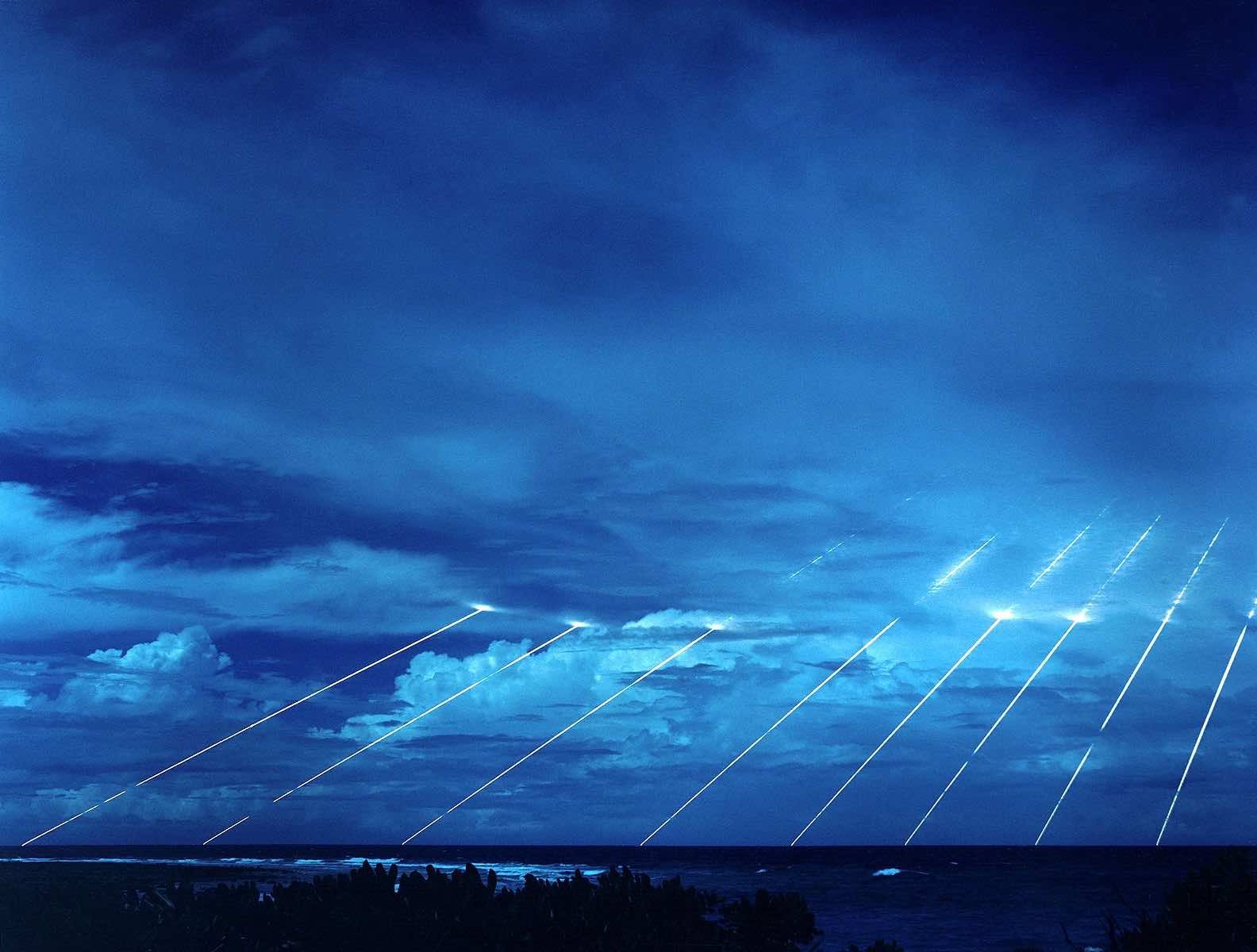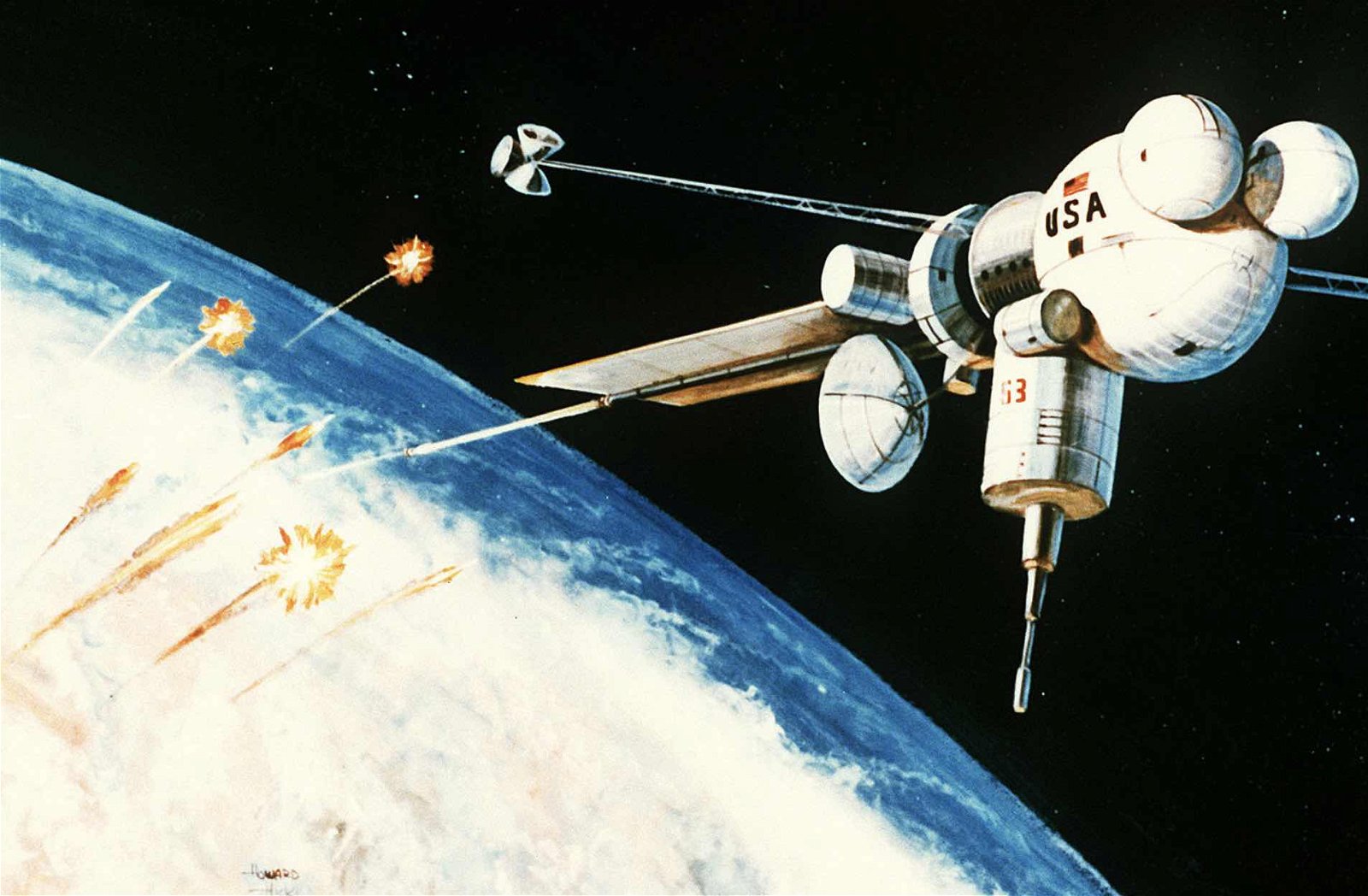It’s safe to say that governing space comes with some difficult caveats to navigate. However, it’s been subject to regulation since the technology became available to allow space travel. The United Nations Office for Outer Space Affairs offers a publicly accessible database of national space law called Accessing Space Treaty Resources Online (ASTRO).
There are five treaties and five sets of principles that intend to govern outer space on an international level. ASTRO details the different sovereignties and categories of space law, including everything from the mitigation of space debris to satellite imagery. While the overarching theme of space law is to keep space open to peaceful exploration for all, things get a bit more complicated when militarization is introduced. The escalation of space militarization has called for a closer look at global security measures.
Space Militarization and Space-Based Weaponry Conflicts
It is now widely accepted that the Outer Space Treaty’s declaration of the right to peaceful exploration of space does not prohibit military in space. It does appear to limit militarization to ‘non-aggressive’ forms, but there is no reason the international humanitarian law (IHL) wouldn’t apply in space. The IHL calls for situational judgment to be made regarding whether or not to enter into conflict and employ force.
However, this situational judgment becomes murky when dealing with space conflicts. It’s debated whether or not space operations are able to solely call for international conflict and weaponry. The deployment of armed forces would likely have to occur if and only if space-based operations, cyber or physical, are intentionally hostile and likely to cause significant damage. However, these parameters are yet to be set universally.
Space-based weapons may also be used from space to Earth, from Earth to space, and throughout space itself. Russia has already tested weapons in space in a purportedly non-destructive, controlled environment. The issue isn’t whether or not nations can have weapons in space — it’s when and how they can use them.


Security Issues With Satellite Surveillance
Weapons in space can refer to a variety of different applications, and what is considered “space weaponry” can at times be open to interpretation. From tangible weaponry to systems capable of espionage or cyberattacks on foreign satellites, navigating these definitions will likely be paramount in determining the lawful use of weapons in space based on the threat level.
Satellite surveillance from space has the potential to cause an array of security issues, including defense-related challenges. In a sense, space itself can be weaponized when using imagery that reveals confidential information. For instance, satellite imagery could reveal the location of an Iranian base that is released by the United States government. This can be considered a threatening information attack due to the vulnerability it opens up for other nations. The dilemma is whether or not international governance of these satellites is possible.
The goal, of course, is to push for conflict avoidance. However, the advancement of space militarization technology will certainly change the way that countries, militaries, and key resource hubs such as hospitals, power plants, and factories will prepare for and respond to threats. Emergency preparedness plans for job sites usually include emergency evacuation plans and designated secure shelters for employees. Immediate containment of the emergency is usually also recommended in many crises.
However, if a job site is being attacked from space, traditional methods of finding shelter or working to address the underlying cause of the problem may not be effective, especially if earth-based technologies are being used. For this reason, many countries are looking to establish a presence in space, as doing so may be the best way to mitigate space-based threats.
The Race To Return to the Moon and Colonize Mars
Countries have long been vying to be the first to return to the moon or send humans to colonize Mars. The desire to control the moon and Mars could cause significant conflict considering this control would give whomever gains it immense power.
This is partly due to the large amount of resources that are available in the cosmos. Possible new industries in the space economy include lunar and asteroid mining for rare minerals, space-based solar power, and in-space manufacturing. The interest in these new economic sectors has generated millions of dollars in private investments, as individuals and businesses alike look to corner the market in these new economic sectors.
A new space race for resources could cause tensions to run high. This would be a large reason in support of space militarization, due to the intensity of the threat. Although this negates the whole point of peaceful exploration, competition may be inevitable.
The Prevention of an Arms Race in Outer Space (PAROS) is a long-standing diplomatic effort by the United Nations to prevent the weaponization of space. This calls for a legally binding treaty that would prohibit the deployment of weapons in outer space, including the placement of anti-satellite (ASAT) systems. Negotiations on PAROS have been ongoing with the international community advocating for its swift adoption as the race to claim space is not dissolving any time soon.
The Emphasis on International Cooperation To Prevent Space-Related Conflicts
Space has become a contested domain. International cooperation remains crucial in the fight to prevent space-related conflicts. Diplomatic efforts through treaties, committees, and codes of conduct underscore the commitment of nations to ensure the peaceful use of outer space.
As technology continues to advance, these efforts are essential in preserving the security and stability of space for future generations, ensuring that space remains a domain of cooperation rather than conflict.
Diplomatic Efforts and Space Militarization
The Outer Space Treaty of 1966 stands as the cornerstone of international space law. With over 110 signatory countries, this treaty prohibits the placement of nuclear weapons in space and restricts the use of the moon and other celestial bodies for military purposes. The treaty emphasizes that space exploration should be for peaceful and scientific purposes, fostering international cooperation. The loopholes that this treaty leaves open to interpretation are something that needs to be addressed and agreed upon by international representatives. This is the only way to prevent destructive space conflict.
The European Union proposed the Code of Conduct for Outer Space Activities, an initiative promoting responsible behavior in space. While not legally binding, it encourages nations to commit to certain principles, such as debris mitigation, collision avoidance, and the prevention of harmful interference with space assets. This code seeks to reduce the chances of accidental conflicts and enhance space security.
These initiatives, along with PAROS, serve to protect space exploration and the international bodies involved in these activities. While it’s not reasonable to expect zero tension to arise due to the nature of international arms races to claim access to resources, through diplomatic consideration and cooperation, it is possible to avoid extreme conflict. The future of space and society, as it stands, is therefore in the hands of the people.
Amanda Winstead is a freelance science and technology writer. Follow her work online at her website.

